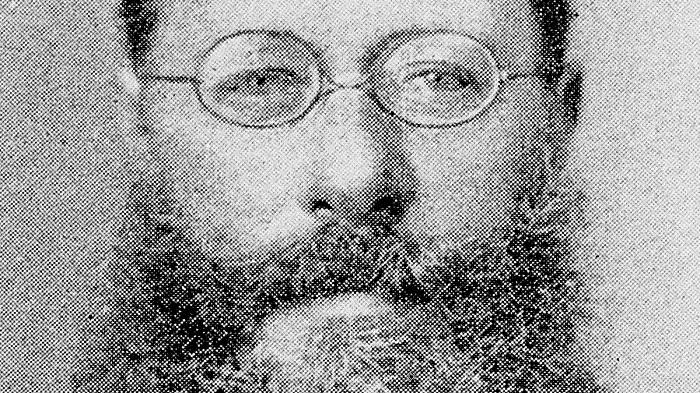How did Edward Lear contribute to Victorian literature?

The Victorian age was an era of great change in art, culture, and society. Literature reflected this energy, with writers exploring realism, moral concerns, and social reform. Yet the period also contained playful and imaginative voices. Among these was Edward Lear, a poet, painter, and humorist best remembered for his nonsense verse. His contributions to Victorian literature are distinctive. He created limericks, invented fantastical characters, and combined humor with artistry. He balanced comic invention with emotional depth. His legacy shows that Victorian writing was not only serious but also filled with wit, creativity, and delight.
Edward Lear as a Pioneer of Nonsense Verse
Invention of a New Genre
-
Lear is often credited as a founder of literary nonsense.
-
His Book of Nonsense (1846) presented limericks that played with sound and rhythm.
-
He combined simple structures with absurd subjects.
-
His style created a new space in Victorian literature for humor and imagination.
Childlike Spirit
-
His verse appealed to both children and adults.
-
He celebrated the illogical and the absurd.
-
He rejected rigid order by offering playful nonsense.
-
His work reflected the joy of childhood within an era often defined by seriousness.
The Role of Humor in Victorian Literature
Contrast with Serious Themes
-
Much Victorian literature dealt with social issues.
-
Writers like Dickens and the Brontës emphasized reform, morality, and human struggle.
-
Lear introduced a lighter voice that balanced this weight.
-
His humorous nonsense gave readers relief and laughter.
Satire and Subtle Commentary
-
Though playful, his verse sometimes hinted at satire.
-
His absurd situations reflected the oddities of social behavior.
-
His humor exposed how rigid rules could seem foolish.
-
Lear’s laughter was not shallow but intelligent and observant.
Lear’s Contribution to Children’s Literature
Stories and Poems for the Young
-
His nonsense verse quickly became favorites among children.
-
He inspired laughter through characters with strange names and habits.
-
His limericks introduced rhythm and rhyme in memorable ways.
-
His poems encouraged creativity rather than obedience.
Influence on Later Writers
-
Later children’s authors drew on his example.
-
Lewis Carroll’s Alice’s Adventures in Wonderland shows echoes of Lear’s style.
-
The tradition of humorous verse for children owes much to his pioneering work.
-
His poetry created a model for blending fantasy with simple expression.
The Visual Artistry of Edward Lear
Poet and Painter
-
Lear was also an accomplished illustrator.
-
He produced detailed drawings of birds, animals, and landscapes.
-
His skill as a painter influenced his poems.
-
His visual imagination made his nonsense verse vivid and colorful.
Illustrated Poems
-
Lear often illustrated his own verse.
-
His sketches gave form to characters like the Owl and the Pussycat.
-
His pictures reinforced the humor and whimsy of his lines.
-
His combination of image and text expanded Victorian artistic expression.
Emotional Depth in Lear’s Poetry
Melancholy Beneath the Humor
-
Lear’s life was marked by loneliness and illness.
-
Beneath his comic tone, many poems carry a sense of sadness.
-
His nonsense sometimes reflects a longing for connection.
-
This duality makes his work emotionally rich.
The Owl and the Pussycat
-
This famous poem mixes romance and absurdity.
-
It shows the blend of joy and strangeness typical of his style.
-
Its charm hides a sense of fragility and dreamlike longing.
-
The poem reflects how Lear used nonsense to express deeper feelings.
Contribution to the Victorian Literary Tradition
Expanding the Range of Literature
-
Lear’s work showed that Victorian literature could be playful.
-
He widened the boundaries beyond realism and moral tales.
-
He proved that nonsense could hold artistic value.
-
His poetry created space for imagination within a serious age.
Enriching the Language
-
Lear’s invented words and names expanded the English literary lexicon.
-
His playful sounds influenced later experimental poets.
-
His rhythms shaped how nonsense verse could function musically.
-
His creativity enriched Victorian literary expression.
The Lasting Legacy of Edward Lear
Influence on Modern Writers
-
Later poets such as W. H. Auden admired Lear’s playful language.
-
Writers of children’s verse, including Dr. Seuss, drew inspiration from him.
-
His nonsense tradition continues in modern fantasy and humor.
-
His legacy demonstrates the enduring value of laughter in literature.
Cultural Memory
-
Lear remains a symbol of joyful creativity.
-
His limericks are still quoted and enjoyed today.
-
His name is tied to the tradition of nonsense poetry.
-
He occupies a special place in the history of Victorian culture.
Conclusion
The contributions of Edward Lear to Victorian literature are both unique and profound. He pioneered nonsense verse, creating a genre that blended humor, rhythm, and absurdity. He gave Victorian readers laughter in an age often associated with gravity. His poetry delighted children and influenced later writers, while his illustrations gave life to his characters. Beneath the humor, his work carried emotional depth, revealing personal struggles and longing. By expanding the boundaries of literature, enriching the English language, and inspiring generations of writers, Lear made a lasting mark.
His contribution shows that Victorian literature was not only about realism or moral lessons. It was also about creativity, imagination, and joy. Lear reminds us that laughter and nonsense hold as much value as solemnity and order. Through his poetry, illustrations, and legacy, Edward Lear ensured that the Victorian tradition included both seriousness and play. His work stands as a testament to the power of humor, the richness of imagination, and the beauty of nonsense in literature.
- Art
- Causes
- Crafts
- Dance
- Drinks
- Film
- Fitness
- Food
- Jocuri
- Gardening
- Health
- Home
- Literature
- Music
- Networking
- Alte
- Party
- Religion
- Shopping
- Sports
- Theater
- Wellness


